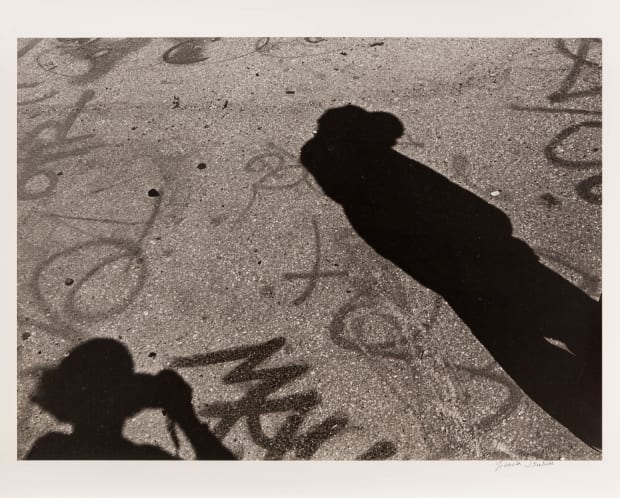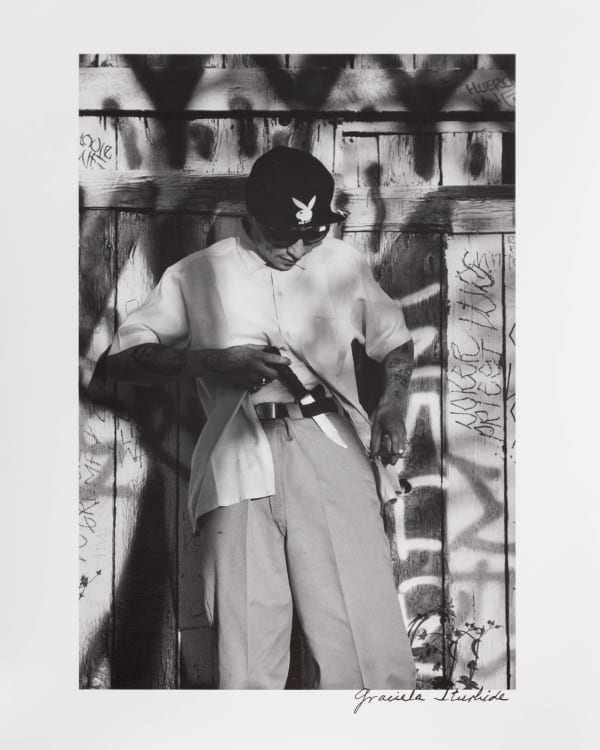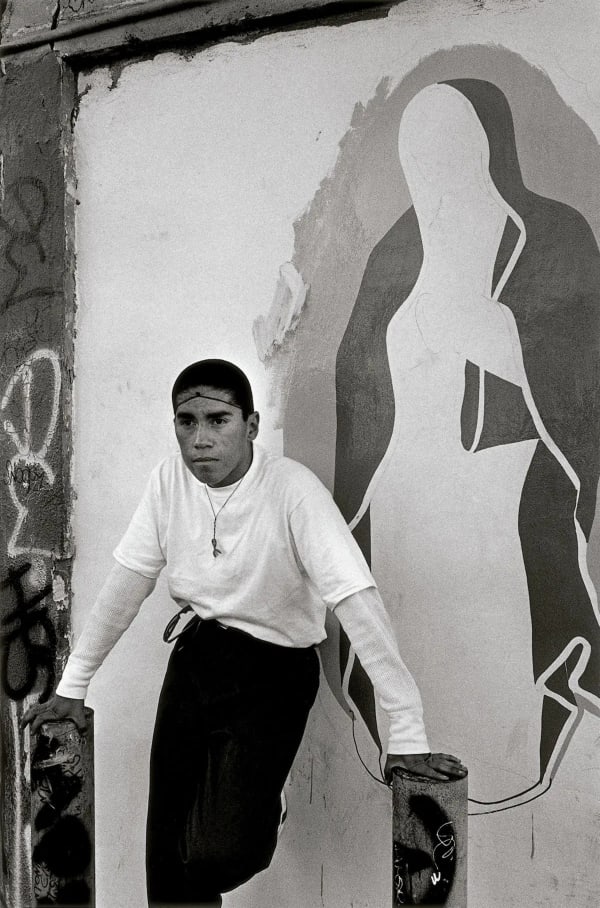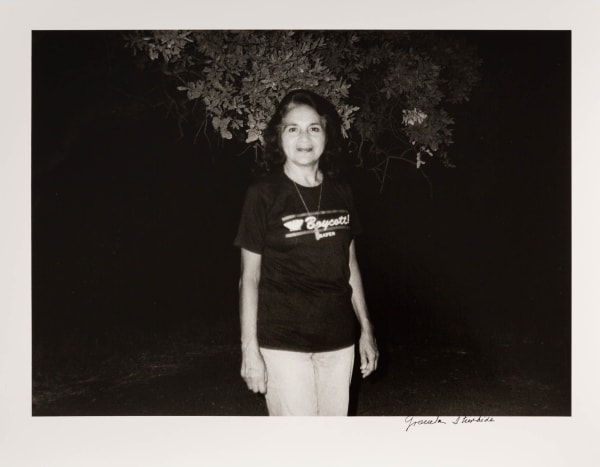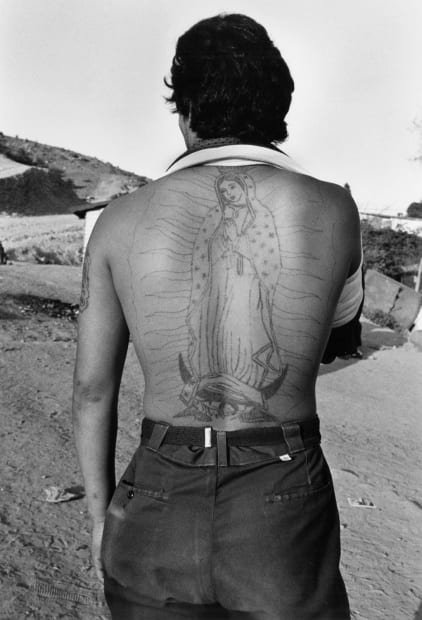-
Graciela Iturbide: Las Californias
New York -
Ruiz-Healy Art is pleased to present Graciela Iturbide: Las Californias, a solo exhibition showcasing the work of the internationally acclaimed photographer. A fully illustrated catalogue will be published alongside an essay written by Dr. Ricardo Romo, author of East Los Angeles: History of a Barrio, first published in 1983. This exhibition marks Iturbide’s second solo show with the gallery and her first at our New York City location.
-

Graciela Iturbide
White Fence, East Los Ángeles (Rosario, Lisa, and friends), 1986Captured in the East Los Angeles neighborhood of Boyle Heights in 1986, Iturbide photographed a group of predominantly deaf Mexican American women connected to the White Fence gang. Iturbide first met the gang while on a tour of the United States alongside fellow photographers for the book A Day in the Life of America. This initial meeting developed into a thirty-three-year friendship and an extensive photographic story spanning 1986 to 2019. In her White Fence series, Iturbide focused on hearing-impaired cholas — Lisa, Cristina, Rosario, and her baby, Boo Boo —all living in an apartment in Boyle Heights, portraying their daily lives with empathy and respect.
-
 Graciela IturbideCholos Harpys, East Los Ángeles, 1989Silver Gelatin Print
Graciela IturbideCholos Harpys, East Los Ángeles, 1989Silver Gelatin Print
16 x 20 in
40.6 x 50.8 cm -
 Graciela IturbideAutorretrato en sombra, White Fence, East Los Ángeles, 1989Vintage Silver Gelatin Print16 x 20 in
Graciela IturbideAutorretrato en sombra, White Fence, East Los Ángeles, 1989Vintage Silver Gelatin Print16 x 20 in
40.6 x 50.8 cm -
In May 1986, she captured her first portraits inside an apartment on Pomeroy Avenue, where residents welcomed her into their most intimate spaces—the main bedroom and kitchen. One image depicts three adults and a baby gathered on a queen-size bed surrounded by everyday objects. In this scene, Iturbide portrays a personal, familiar moment, showing her subjects relaxed and unposed within their private world. Iturbide captured Rosario and her baby, Boo Boo, in the backseat of a 1970s Chevy Impala. Rosario signals to a friend as she prepares to feed her crying baby. Despite Boo Boo's tears, she maintains her composure; her movements are calm, almost ritualistic. The car becomes an extension of the domestic space, a site where care unfolds amid the texture of everyday life. In Cristina Tomando Una Foto, the subject captured the photographer, as both are recognized as documenting the other.
-
As Alfonso Morales Carillo notes in White Fence Revisited, "Like the master bed in the apartment on Pomeroy Avenue, the interior of that vehicle was spacious enough for Rosario to tend to Boo Boo's needs and for Cristina to apply her eyeliner."
-
 Graciela IturbideRosario y Boo Boo, White Fence, East Los Ángeles, 1986Silver Gelatin Print
Graciela IturbideRosario y Boo Boo, White Fence, East Los Ángeles, 1986Silver Gelatin Print
14 x 11 in
35.6 x 27.9 cm -
-
Because the White Fence members Iturbide captured were hearing impaired, this invites reflection on their “hand signs” as expressions of communication, not just symbols of gang identity. Gesture becomes language, transforming silence into a form of expression and resistance.In the photograph Cholas I (con Zapata, Juárez y Villa), White Fence, East Los Ángeles, Iturbide notes a disconnect between Chicano culture and Mexican history. In an interview with the Los Angeles Times, she recalls the moment she captured this photograph: “For me, it was very interesting because they have a nostalgia about Mexico that isn’t always based in fact. A group of them told me, ‘We want you to photograph us by the mural of the mariachis.’ It was a mural of Mexico’s historical heroes: Benito Juárez and Pancho Villa [and Emiliano Zapata]. They can be really mistaken about Mexico, but they still have a profound nostalgia for it.”
-
 Graciela IturbideCristina en su casa, White Fence, East Los Ángeles, 1986Vintage Silver Gelatin Print
Graciela IturbideCristina en su casa, White Fence, East Los Ángeles, 1986Vintage Silver Gelatin Print
14 x 11 in
35.6 x 27.9 cm -
-
Depicted in East LA are two male gang members in front of a graffiti-covered wall. The members are using gang signs, nonverbal cues that can identify individuals who walk the streets and indicate which side of town or gang they belong to. In Cholo Harpys, White Fence, East LA, Iturbide captures a friend of one of her main subjects, who wears a flatbrim black baseball cap with the letters WF printed in bold white letters under the brim. Landmarks, street names, and neighborhoods often dictate gang rivalry. In Virgen de Harpys, Iturbide captures a young gang member standing before a mural of the Virgin of Guadalupe—a powerful intersection of faith, masculinity, and cultural identity. The image transforms the street into a sacred site, where religious iconography merges with urban expression.
-
During one of her trips to California, to visit the White Fence gang, Chicana artist Ester Hernández introduced Iturbide to the renowned farmworkers’ leaders and civil rights advocates, César Chávez and Dolores Huerta, founders of the United Farm Workers (UFW). Huerta and Chávez played a pivotal role in organizing farmworkers and shaping the Chicano movement’s vision of justice and dignity. Iturbide’s portraits resonate with the broader collective impulse that defined the Chicano struggle—a movement through which Mexican Americans reclaimed their history, culture, and identity.
-
-
After photographing the White Fence gang in Los Angeles, Iturbide would repeatedly return to California. Iturbide also photographed Mexican nationals in Tijuana, a city bordering San Diego County, California. In 1991, she captured a mural of the Virgin of Guadalupe, a central figure of Mexican identity, on a wall covered with graffiti featuring the words "TYJUAS," which is a slang version of the city name Tijuana, reinforcing the notion of the border as a place of its own identity, neither entirely Mexican nor thoroughly American. The Virgin on the wall is a visual reminder of the Mexican presence and a symbol of protection and hope for those who pass through or live in this area. Iturbide’s work, Los Ángeles, highlights a Cesar Chavez mural, featuring the flag raised by Chávez’s followers, composed with a stylized eagle with its wings spread, which became a powerful emblem of resistance.
-
 Graciela IturbideLa frontera, Tijuana, Baja California, México, 1989Signed by the artist in ink on rectoSilver Gelatin Print14 x 11 in
Graciela IturbideLa frontera, Tijuana, Baja California, México, 1989Signed by the artist in ink on rectoSilver Gelatin Print14 x 11 in
35.6 x 27.9 cm -
 Graciela IturbideCholo en Tijuana, Baja California, 1990Signed in ink on recto; signed and titled by the artist in pencil on versoSilver Gelatin Print14 x 11 in
Graciela IturbideCholo en Tijuana, Baja California, 1990Signed in ink on recto; signed and titled by the artist in pencil on versoSilver Gelatin Print14 x 11 in
35.6 x 27.9 cm -
 Graciela IturbideLa frontera, Cañón Zapata, Baja California, 1991Signed by the artist in ink on rectoSilver Gelatin Print8 x 10 in
Graciela IturbideLa frontera, Cañón Zapata, Baja California, 1991Signed by the artist in ink on rectoSilver Gelatin Print8 x 10 in
20.3 x 25.4 cm
Graciela Iturbide: Las Californias: New York
Current viewing_room




